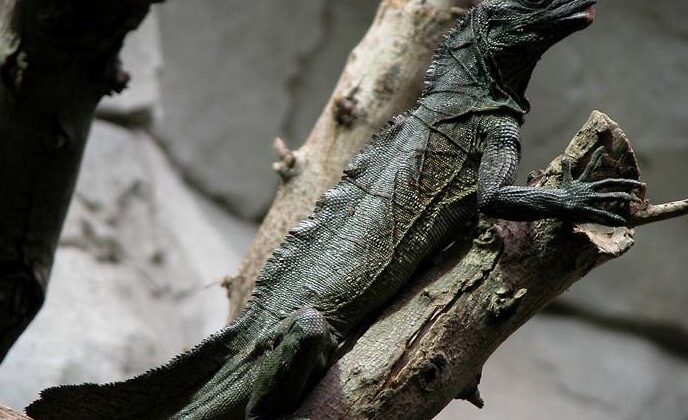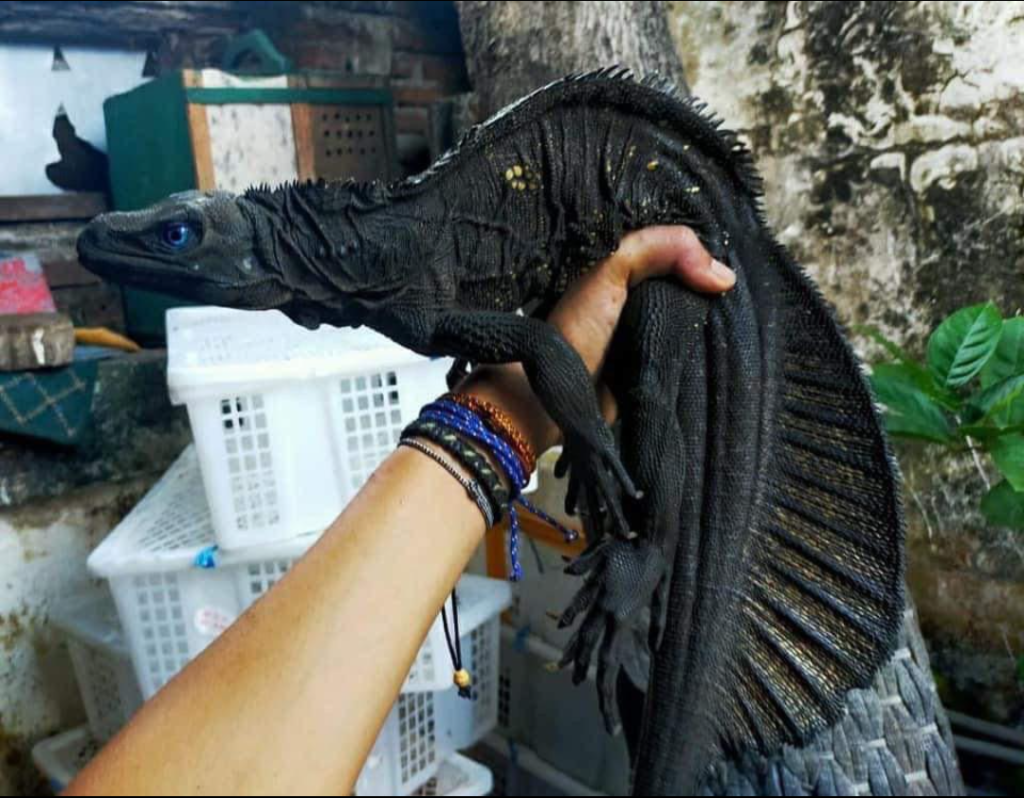
If you’ve ever heard of a sailfin lizard or sailfin dragon, you may be familiar with the Hydrosaurus genus. These large lizards are known for their unique sail-like structures on their tails and are found in Indonesia and the Philippines. In this article, we’ll dive into what makes the Hydrosaurus lizard genus so fascinating and unique.

Appearance and Behavior
Hydrosaurus lizards are relatively large, with some species reaching up to three feet in length. They are semiaquatic and are often found near water sources such as rivers and mangroves. These lizards use both their feet and tail to run short distances across water, similar to the basilisks. The sail-like structure on their tails is thought to aid in balance while moving across the water.
The Hydrosaurus genus is made up of five different species: Hydrosaurus amboinensis, Hydrosaurus celebensis, Hydrosaurus microlophus, Hydrosaurus pustulatus, and Hydrosaurus weberi. These species can be distinguished by differences in coloration, size, and geographic range.
Threats to Hydrosaurus Lizards
Despite their fascinating appearance and unique behavior, Hydrosaurus lizards face several threats in their native habitats. One major threat is habitat loss due to deforestation and human development. Additionally, Hydrosaurus lizards are often collected for the wild animal trade, which can have a significant impact on their populations.
Taxonomic History
In the 19th century, the Hydrosaurus genus was originally called Lophura. However, it was later discovered that the name was already taken by a genus of pheasants. The Hydrosaurus genus is the only member of the subfamily Hydrosaurinae.
Species
Conclusion
The Hydrosaurus genus is a fascinating group of lizards with unique adaptations for a semi-aquatic lifestyle. Unfortunately, their populations are threatened by habitat loss and overcollection for the wild animal trade. By learning more about these amazing creatures, we can work towards protecting them and their habitats for future generations to enjoy.


Leave a Reply